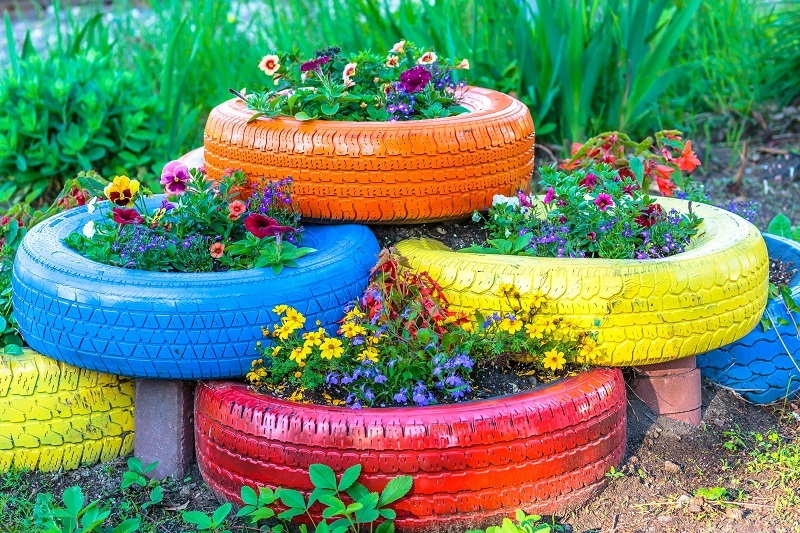Discover the Secrets of Orchid Care
Posted on 01/07/2025
Discover the Secrets of Orchid Care: A Comprehensive Guide
Orchids, with their exquisite beauty and unique allure, have captured the hearts of plant enthusiasts worldwide. However, their delicate nature often makes them seem intimidating to care for. Whether you're a beginner or an experienced gardener, understanding the secrets of orchid care can turn your space into a tropical paradise. In this article, we will uncover everything you need to know about growing orchids at home, ensuring your plants thrive and bloom throughout the year.

Introduction to Orchid Plants
The orchid family (Orchidaceae) is one of the largest and most diverse groups in the plant kingdom, with more than 25,000 species and over 100,000 hybrids. Orchids are known for their vivid colors, striking shapes, and long-lasting blooms. These fascinating flowers can be found on every continent except Antarctica.
- Phalaenopsis (Moth Orchid) - Easy to grow and perfect for beginners.
- Cattleya - Known for their large, fragrant blooms.
- Dendrobium - Popular for their diverse shapes and vibrant colors.
- Oncidium - Light-loving orchids with bright, patterned flowers.
- Vanda - Valued for their intense colors and exotic appearance.
Understanding the basic characteristics of these orchids is vital for crafting the right environment for their growth. Now, let's delve into the major orchid care secrets that every enthusiast should know.
The Right Light: Illuminating Your Orchid's Growth
One of the most important factors in proper orchid care is providing appropriate lighting. Orchids are highly sensitive to light levels, and understanding their needs is essential for a thriving plant.
How Much Light Do Orchids Need?
- Phalaenopsis: Prefer indirect or filtered light. Direct sun can scorch their leaves.
- Cattleya and Vanda: Require more light, but still need some protection from the harsh midday sun.
- Dendrobium and Oncidium: Favor bright, indirect light for best results.
A great way to determine if your orchid is getting sufficient light is by observing its foliage:
- Dark green leaves: Possibly too little light.
- Yellowish-green leaves: Ideal lighting conditions.
- Reddish hues or scorched spots: Too much direct sun.
Best Placement for Orchids Indoors
- East-facing windows typically provide the perfect morning sun.
- South or west windows may be too strong; use a sheer curtain to diffuse light.
- Artificial grow lights are suitable for homes with limited natural lighting.
Mastering Orchid Watering Techniques
Orchids are epiphytes, which means in nature, they grow on trees and rocks, drawing moisture from the air and rainfall. Overwatering is the most common mistake made by orchid owners, leading to root rot and other issues.
How Often Should You Water Orchids?
- Water once a week during winter; increase to twice a week in warmer, dry months.
- Allow the potting medium to dry out between waterings. Gently stick your finger into the media to check moisture.
- Always water in the morning to allow excess moisture to evaporate during the day.
Tip: Use lukewarm water and avoid wetting the leaves, as prolonged moisture can promote diseases.
Signs of Improper Watering
- Mushy, black roots: Overwatered.
- Wrinkled, limp leaves: Underwatered.
- Healthy roots look white or green and firm to the touch.
Choosing the Right Orchid Potting Mix
The traditional garden soil is unsuitable for orchids. Instead, these plants need a special potting mix that allows excellent drainage and air flow.
- Bark-based mixes: Most commonly used, offering support and ventilation.
- Sphagnum moss: Retains moisture, suitable for drier environments.
- Perlite and charcoal: Added to enhance drainage.
When re-potting, choose clear plastic pots with drainage holes. This allows you to check root health and moisture levels easily. Re-pot every 1-2 years, preferably after the flowering period.
Orchid Humidity & Temperature Secrets
Orchids love humidity. Most species thrive in 50%-70% humidity. Too little or too much can affect blooming and overall health.
How to Increase Humidity
- Place your orchid groups together to create a microclimate.
- Use pebble trays with water, ensuring the pot remains above water level.
- Mist your orchids regularly, but avoid leaving leaves wet overnight.
- Utilize humidifiers in dry climates for consistent results.
Preferred Orchid Temperature Ranges
- Daytime: 18?C-29?C (65?F-85?F)
- Nighttime: 15?C-18?C (60?F-65?F)
Temperature fluctuations are beneficial for triggering blooms. Try to mimic the "jungle rhythm" by providing a slight nighttime drop in temperature for a few weeks.
Expert Tips on Orchid Feeding and Fertilization
Orchids are not heavy feeders, but giving them the nutrients they need promotes robust growth and abundant blooms.
Best Orchid Fertilizers
- Choose a balanced, water-soluble fertilizer (such as 20-20-20) specifically formulated for orchids.
- Feed "weakly, weekly": Mix fertilizer at half the recommended strength, applying once every week or two.
- Flush the potting media with plain water monthly to remove salt build-up.
- During dormancy (after blooming), reduce feeding to once per month.
Remember: Over-fertilizing can burn the roots and inhibit blooming.
Secrets to Successful Orchid Blooming
Most new growers ask, "Why isn't my orchid blooming?" Blooms are often dependent on environmental triggers and proper orchid plant care.
Top Bloom-Boosting Tips
- Temperature drop at night for several weeks can initiate blooming.
- Provide bright, indirect light for at least 12-14 hours daily.
- Ensure the orchid is not root-bound; adequate root space is crucial.
- Avoid exposing your orchid to ethylene gas from ripening fruits.
Many orchids bloom only once per year, but with the right care, you can enjoy seasonal re-blooming for years to come.
Pruning, Grooming, and Propagating Orchids
Keeping your orchid healthy sometimes requires a little aesthetic maintenance.
- Pruning: After the flowers drop, trim the flower spike back to just above a node or all the way to the base (check species specifics).
- Grooming: Remove dead or yellowing leaves and spent flower stems to tidy up the plant.
- Propagation: Some orchids can be started from keikis (offshoots) or by dividing mature plants during repotting.
Always use sterilized tools to prevent the spread of diseases!
Common Orchid Problems and How to Solve Them
Pest Management
- Mealybugs, aphids, scale, and spider mites are common pests.
- Remove pests with an alcohol-soaked cotton swab or use a gentle insecticidal soap.
- Maintain good air circulation to deter infestations.
Disease Symptoms and Solutions
- Root Rot: Usually caused by overwatering. Repot in fresh, dry medium and remove affected roots.
- Leaf Spots: Fungal or bacterial in origin; clip off affected parts and improve air flow.
- Bud Blast: Stress from environmental changes; keep conditions steady for happy blooms.
Regular check-ups, proper hygiene, and stable conditions are the best defenses against most problems!
Top 10 Expert Orchid Care Tips for Beginners
- Choose the right orchid type for your environment and skill level.
- Use clear pots to easily monitor root health and watering needs.
- Avoid letting water sit in the crown (base) of the plant.
- Keep your orchid away from drafts and sudden temperature changes.
- Rotate your orchids periodically for even growth.
- Don't move blooming orchids unless necessary - they are sensitive!
- Fertilize weakly, weekly during active growth.
- Repot your orchid every 1-2 years. Orchids outgrow their pots or their media deteriorates over time.
- Practice patience; orchids need time to adapt and bloom.
- Enjoy the process! The journey of orchid care is deeply rewarding.
Fascinating Facts About Orchids
- Orchids have the smallest seeds in the plant kingdom--some are dust-like!
- The vanilla plant is a species of orchid (Vanilla planifolia).
- Some orchids mimic the appearance and scent of female bees to attract pollinators.
- Orchids symbolize love, beauty, and strength in many cultures.

Conclusion: Unveil the Joys of Orchid Care
With the right understanding and a touch of patience, anyone can master the art of orchid care at home. By providing proper light, balanced watering, suitable temperature, and a high-quality orchid mix, your plants will reward you with stunning, long-lasting blooms. Remember, each species has its quirks--discovering these secrets is part of what makes orchid growing so magical.
If you're seeking to enhance your living space and connect more deeply with nature, caring for orchids is the perfect journey. With this comprehensive guide, you're now equipped to unlock the secrets to growing healthy orchids and enjoy their beauty for years to come.
Additional Resources on Orchid Care
- American Orchid Society: Orchid Care
- Royal Horticultural Society: Orchid Growing Guide
- Orchid Care Tips for Beginners
Ready to put your new knowledge to the test? Begin your orchid journey today and share your experiences with fellow plant lovers! Happy growing!
Latest Posts
Hydrangea Care: From Planting to Blooming Success
How to Nurture Cut Flowers for Maximum Longevity
The Mystery of Your Birth Flower: What Insights Does It Offer About You
Ideal Low-Care Office Plants for a Fresh Workspace
Peony Flowers: Unlocking Their Symbolism and Color Interpretations





